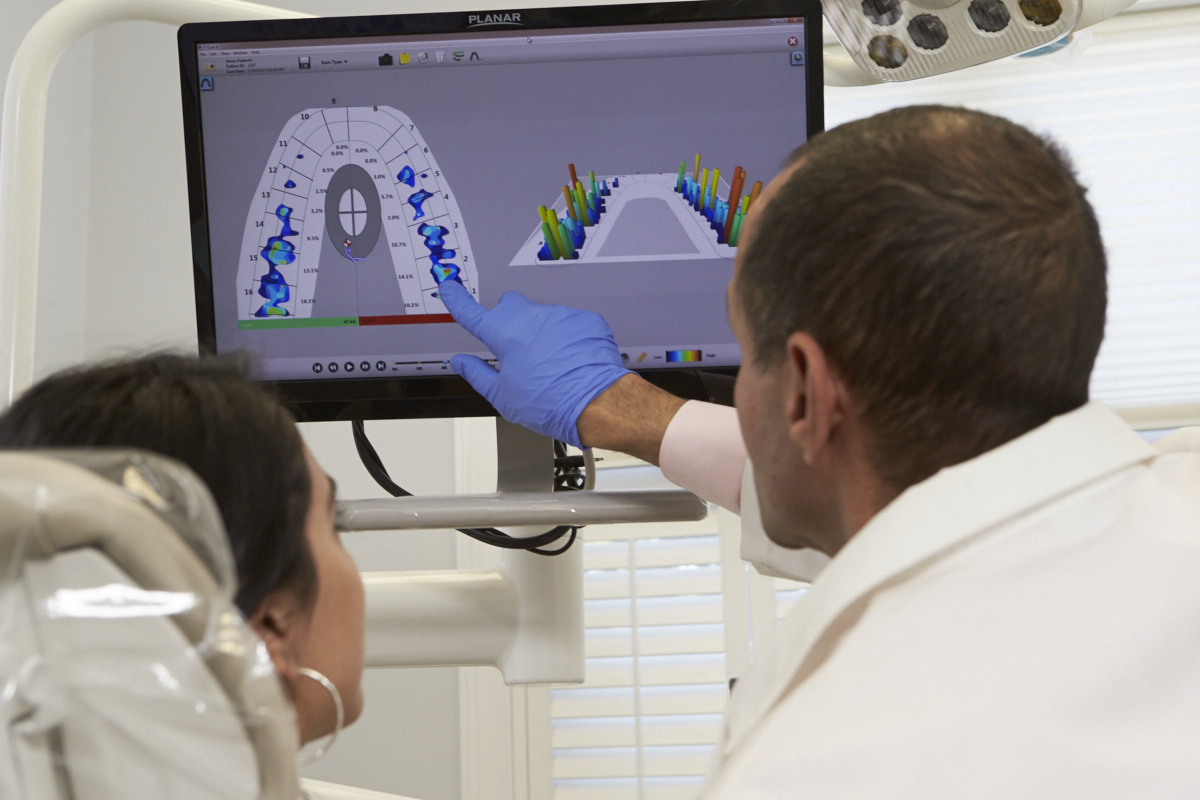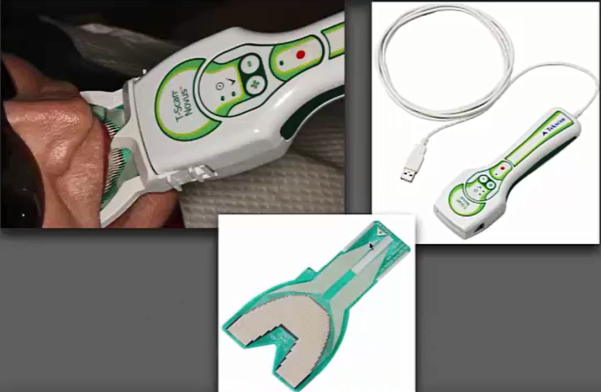Clinician Spotlight: Scott Keith
Dr. Scott Keith, DDS practices in Walnut Creek, California, specializing in dental implant research and education. A long-time user of T-Scan™, Dr. Keith recently hosted a webinar for Tekscan about how to manage complex implant cases using digital occlusal analysis technology. Here are some snippets from that webinar in the form of a Q&A.
Describe how you use technology in your practice.
We have two monitors where we can display information whether it's radiographs or patient’s schedule or Cone Beam scan or our T-Scan data. We purchased our first Cone Beam CT – it’s almost nine years ago, but just updated it last year with a machine that also happens to be Kodak, but it does Cone Beam CT and Panoramic X-rays. We can use technology to combine different data sets, we can use our DICOM, we can put it into software to plan out and mill or for print-guided surgical templates for implant replacements with high precision. Sometimes we find things like little calcifications and submandibular vessels. We can always send that data out to companies and radiology firms, so you can evaluate things that you might find incidentally.
How did you first hear about T-Scan™?
When I was at a program listening to some speakers talking about All-on-4 Immediate Loading, a gentleman by the name of Dr. Steven Bongard, reacquainted me with T-Scan. T-Scan was something that we had available during our residency, but it was a totally different animal than what it is today. It was not a rolling cart, but it was just more of an acute kind of afterthought than the real clinical tool that we have today.

What’s the value of T-Scan in implant cases?
Just because we removed the teeth doesn’t change the patient’s bite force capability, doesn’t change his muscles, doesn’t change his habits. We have to try and equilibrate and distribute the forces such that they were evenly contacting on any material to minimize damage. We make final impressions, we try in teething wax, we fabricate in laboratory or lab, maybe making CAD/CAM titanium bar as a framework, teeth are set on that and processed such that we can finish the case. Again, we’ll always use T-Scan to show us how our distribution is and if we’re getting any premature contacts.
Before T-Scan, we were seeing breakage. Those early experiences made us a believer in T-Scan. No one wants to have an unhappy patient come walking into the practice in the middle of a busy day. We have to find time to deal with these types of repairs whether it's teeth popping off, whether it's acrylic resin fracture. T-Scan is just as much a finishing tool as it is a prevention tool.
There’s a set protocol. In addition to following the basic prosthetic steps and finishing the case, a digital assessment is necessary.

What features of T-Scan are helpful to you?
We’ll pull out our T-Scan with the new sensor handle now, which is much more ergonomic, really nice to use. Nice cord, a little more durable and feel. You also can not only open a scan, but we can start and stop it all with one button. In addition to that, you can adjust the sensitivity of your sensor higher or lower based upon what we see on the bite force.
Obviously seeing the data on-screen helps us with validating a patient’s concern: “I'm hitting right here,” and guess what? She's right. She’s hitting right on that number 5, that prematurity. I'm not going to adjust or anything until T-Scan tells me this is where I need to go.
We have our little implant warnings that will pop up based upon what you preset for defaults on the tooth chart. If the implant loads too early or with too much force, you’ll get an alert.
We can scan a patient’s teeth, and we have digital models that are put into an STL-type file. We can take that STL file and import it into the patient chart with this feature in the patient record. Instead of looking at just a generic arch form, we can overlay their data force contacts or movie recordings. I have to tell you this is very new, and this is something I'm still working out the details on, but it's exciting to see. It is really starting to be a game-changer.
Dr. Keith earned his Bachelor of Science in Kinesiology from UCLA in 1991. He received his DDS with valedictorian honors from the University of California, San Francisco School of Dentistry in 1995. He then completed specialty training in Prosthodontics at the Baylor College of Dentistry and also earned a Master of Science degree in Oral Biology. Dr. Keith has published several articles and has presented his research into dental implants internationally. In June of 1998, Dr. Keith's work won the ITI (International Team for Implantology) Research Competition for his presentation at the ITI World Symposium in Boston. Dr. Keith was awarded a prestigious surgical fellowship by the ITI to further his training at the Harvard School of Dental Medicine where he also maintained a faculty appointment teaching at the pre-doctoral and graduate levels.
The information on the Tekscan website is provided with the understanding that the organization is not engaged in rendering medical or legal advice or recommendations. You should not rely on any information on the website to replace consultations with qualified health care, clinical, or legal professionals to meet your individual needs. References to any treatment or therapy option, or to any program, service or treatment do not constitute an official endorsement by Tekscan, Inc. Read our full disclaimers.